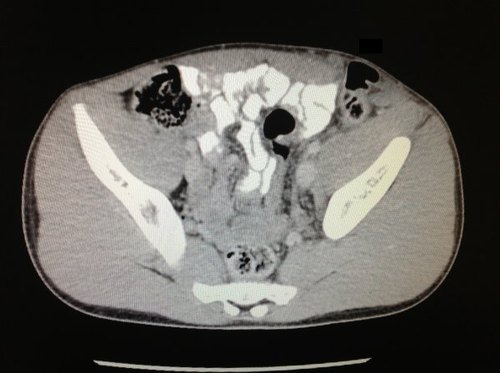Yesterday’s question related to ordering a CT scan in patients with a gunshot to the abdomen. Should it ever be needed? In general, if you encounter this question on an exam, the answer should be no. However, medicine in general and trauma in particular are not so black and white. There are always exceptions to the rules.
Generally speaking, gunshots to the abdomen have a 90+ percent chance of causing an injury that requires repair. Pretty good odds that the patient needs a laparotomy. However, there are a few cases where further diagnosis may be okay.
In general, additional imaging is warranted if it will change the decision-making process in some way. In most gunshots to the abdomen, decision-making is very straightforward, and the patient must go to the OR without delay.
In some cases, there is a question as to whether or not the patient even needs an operation. The most common situation occurs when the wound could be tangential and completely extraperitoneal. These patients must be hemodynamically stable and without diffuse abdominal pain or tenderness to be considered for CT. Symptoms over the wound tract are acceptable. CT can show very clearly that the bullet stayed away from critical internal structures. These patients may even be discharged if they have no other injuries.
The other case is applicable in select patients with an obvious need for OR and who are hemodynamically stable. If a roadmap provided by CT would potentially cause the surgeon to limit, focus or expand the exploration, the scan may be justifiable. Most commonly, this occurs in patients with multiple gunshots, in whom the exact trajectories can’t be fully appreciated by looking at the holes and the known bullets seen on plain abdominal images.
Bottom line: CT scan in patients with gunshots to the abdomen should be a rare occurrence. There must be specific indications, and the patient must be hemodynamically stable. If the result may change the procedure in some way, it may be justifiable. Just be ready to explain your rationale to your trauma medical director! They will ask!


